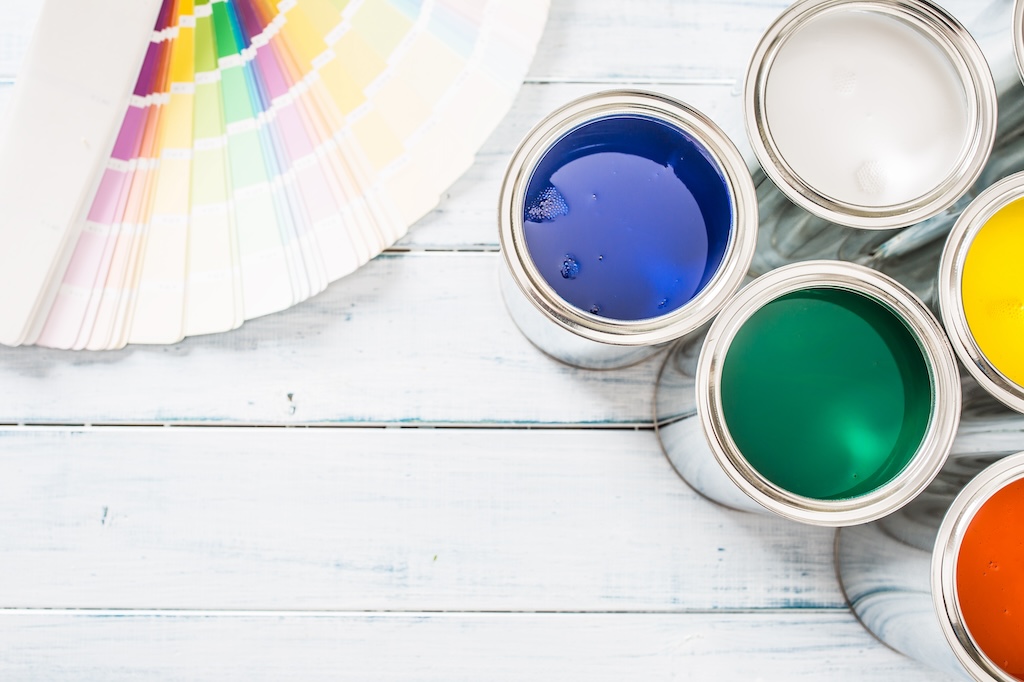House paints are intricate chemical formulations, offering durability, coverage, and aesthetic appeal. Understanding the chemical composition of house paint is vital for informed painting decisions. Paint ingredients influence not only the final appearance but also aspects like drying time, paint longevity, and its reaction to environmental conditions. This knowledge empowers homeowners to choose the most suitable paint for their projects, ensuring lasting results and satisfaction. Selecting the right type of paint is crucial for the protection and aesthetics of a home, and can significantly affect the maintenance and longevity of the paint job.
Water-Based Paints: A Closer Look
Water-based paints, commonly known as latex paints, primarily consist of pigments, binders (such as acrylic or vinyl), and water. The water acts as a solvent, which evaporates as the paint dries, leaving behind a color layer. These paints are known for their low VOC content, ease of cleanup, and quick drying times. Additionally, they are less prone to yellowing over time compared to their oil-based counterparts and maintain their color better in sunlight. Their adaptability to various climatic conditions and resistance to cracking make them a popular choice for both interior and exterior applications.
Oil-Based Paints: The Traditional Choice
Oil-based paints contain pigments, a drying oil such as linseed oil as a binder, and organic solvents like mineral spirits. They are valued for their durability and smooth finish but have higher VOC levels and require careful application and cleanup. Additionally, oil-based paints typically have a longer drying time, advantageous for achieving a smooth, brush-stroke-free surface on projects with no time constraints. Their superior adherence makes them ideal for surfaces that endure heavy wear, such as trim and baseboards. Despite their robust finish, the environmental impact and odorous fumes are significant considerations.
Specialty Paints: Unique Formulations
Specialty paints, such as chalk paint, enamel paint, and epoxy paint, have unique chemical compositions tailored to specific applications. For instance, enamel paints often include alkyd resins for a hard, glossy finish, while epoxy paints combine resins and hardeners for a durable, resistant coating. Chalk paints offer a matte finish, are easily distressed for a vintage look, and adhere well to a variety of surfaces without the need for priming. These paints are designed for specific tasks and offer solutions where traditional paints might not suffice, such as floors, cabinets, or outdoor fixtures. Their specialized properties enable decorators and DIY enthusiasts to achieve distinctive looks and functional qualities.
Environmental and Health Considerations
The chemical composition of paints has a significant impact on environmental and health considerations. Water-based paints with low VOCs are generally safer for indoor use and better for the environment. In contrast, oil-based paints require more careful handling and ventilation due to their higher VOC content. It’s important to choose paints not only based on the finish and durability desired but also on the potential health impacts and environmental footprint. Opting for paints with lower VOC levels can contribute to a healthier living environment and reflect a responsible choice for our planet.
Advances in Paint Chemistry
Recent advances in paint chemistry focus on eco-friendly formulations, like water-based paints matching oil-based durability and low-VOC options for safer indoor air quality. Manufacturers strive to improve resilience and coverage of these choices, aiming for widespread adoption among professionals and DIY enthusiasts alike. These developments signal a positive shift towards sustainable practices in the painting industry, benefiting both users and the environment. Innovations continue to emerge, such as self-cleaning or pollution-reducing paints, which aim to add even more value to paint applications. As technology progresses, we can expect even more advanced and environmentally conscious solutions to become available.
Final Thoughts
Understanding the chemical composition of house paints is crucial for selecting the appropriate paint for your project. Consider factors such as durability, finish, environmental impact, and health. As paint technology advances, we anticipate the emergence of more innovative and sustainable options, which will likely revolutionize the painting industry and our approach to interior design and home renovation. Keeping abreast of these developments can empower homeowners to make informed choices and contribute to a more sustainable future. With the right knowledge, you can select a paint that not only looks great but also aligns with your environmental values and health concerns. For more insights into the world of house paints and decoration, visit our website at sisupainting.com and our blog at sisupainting.com/blog.





No comment